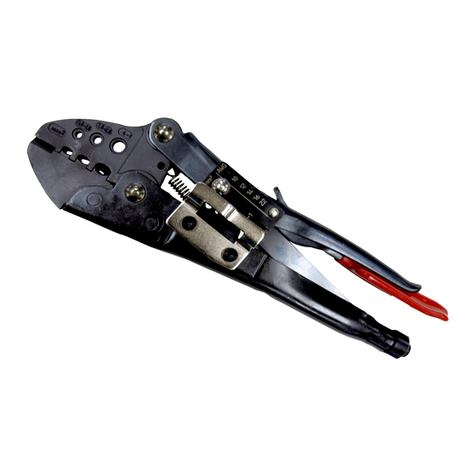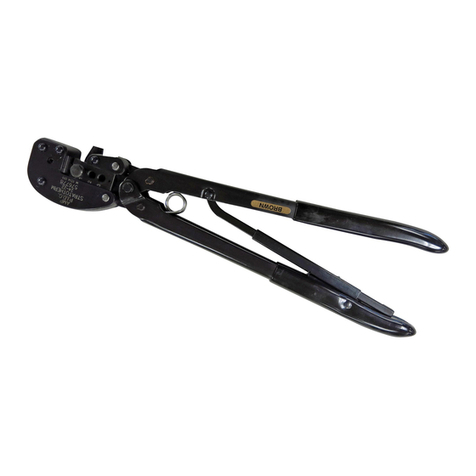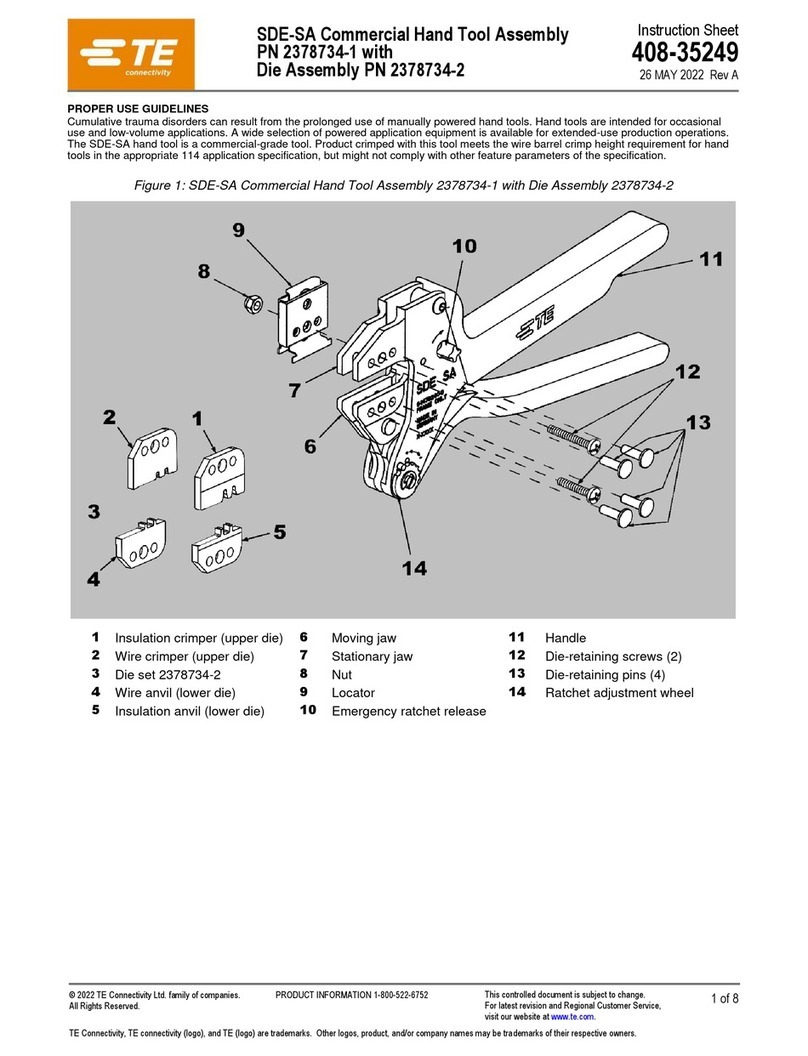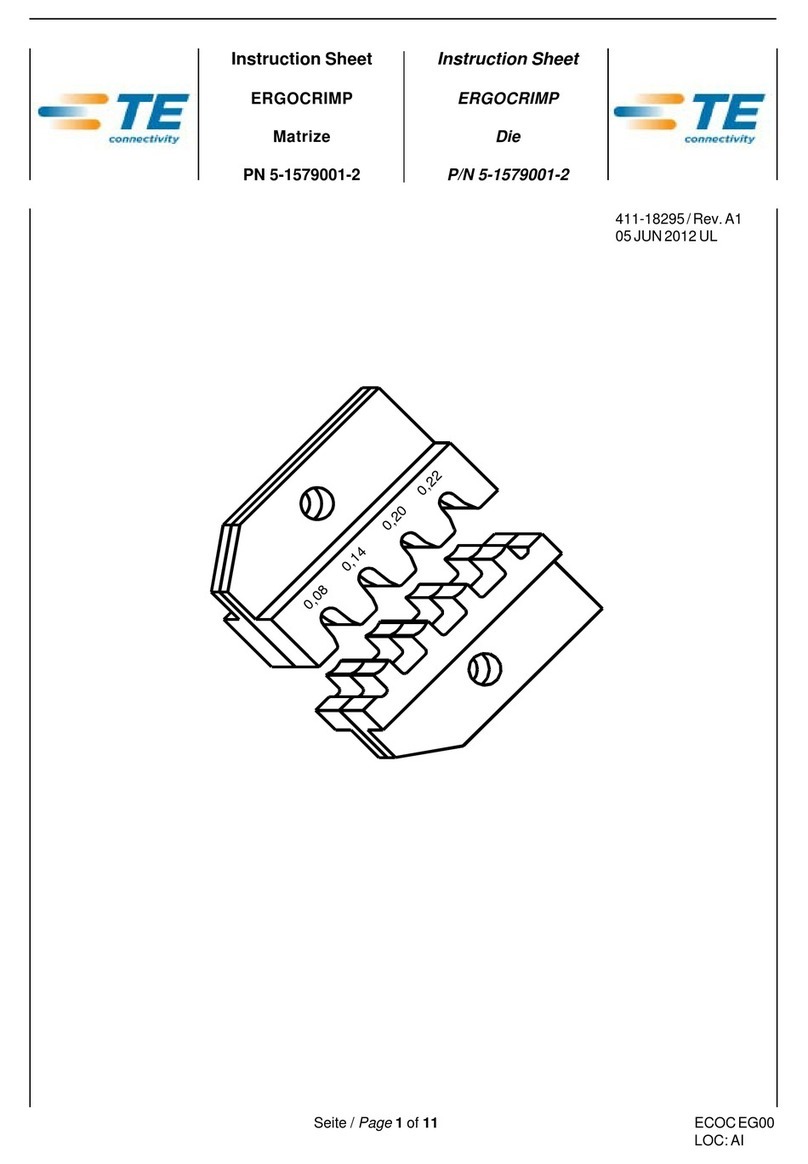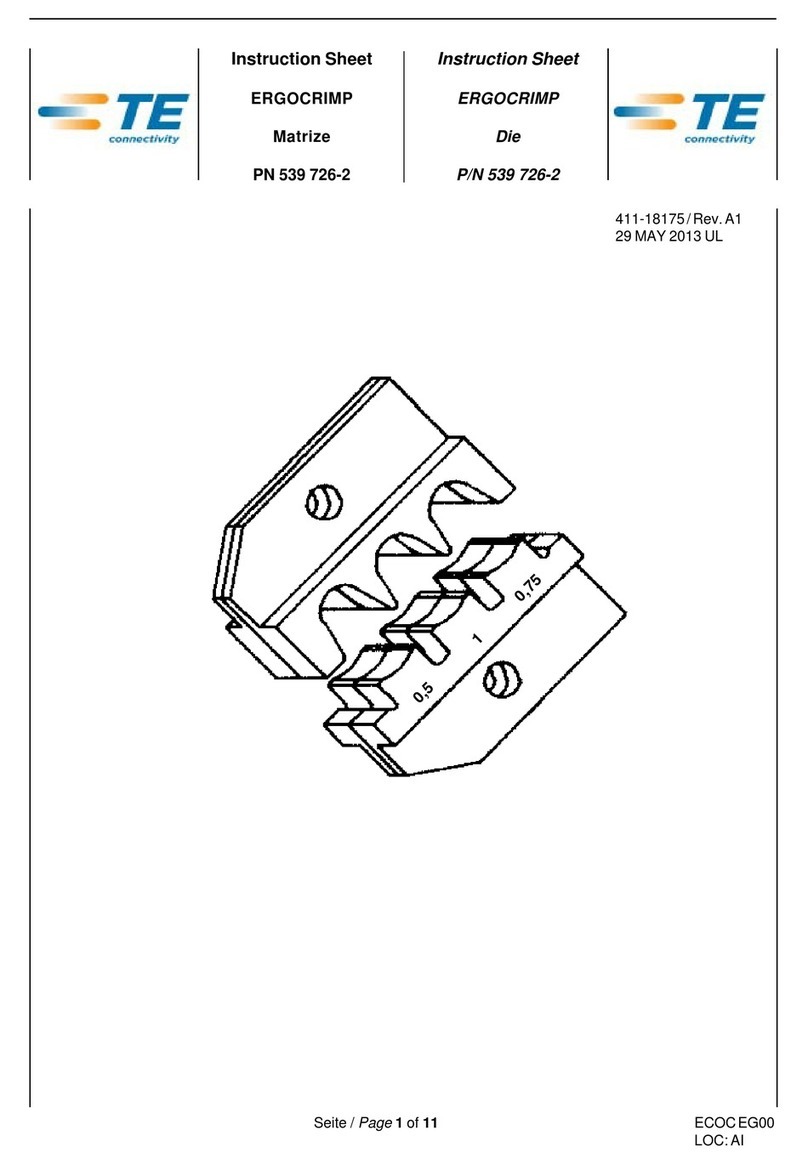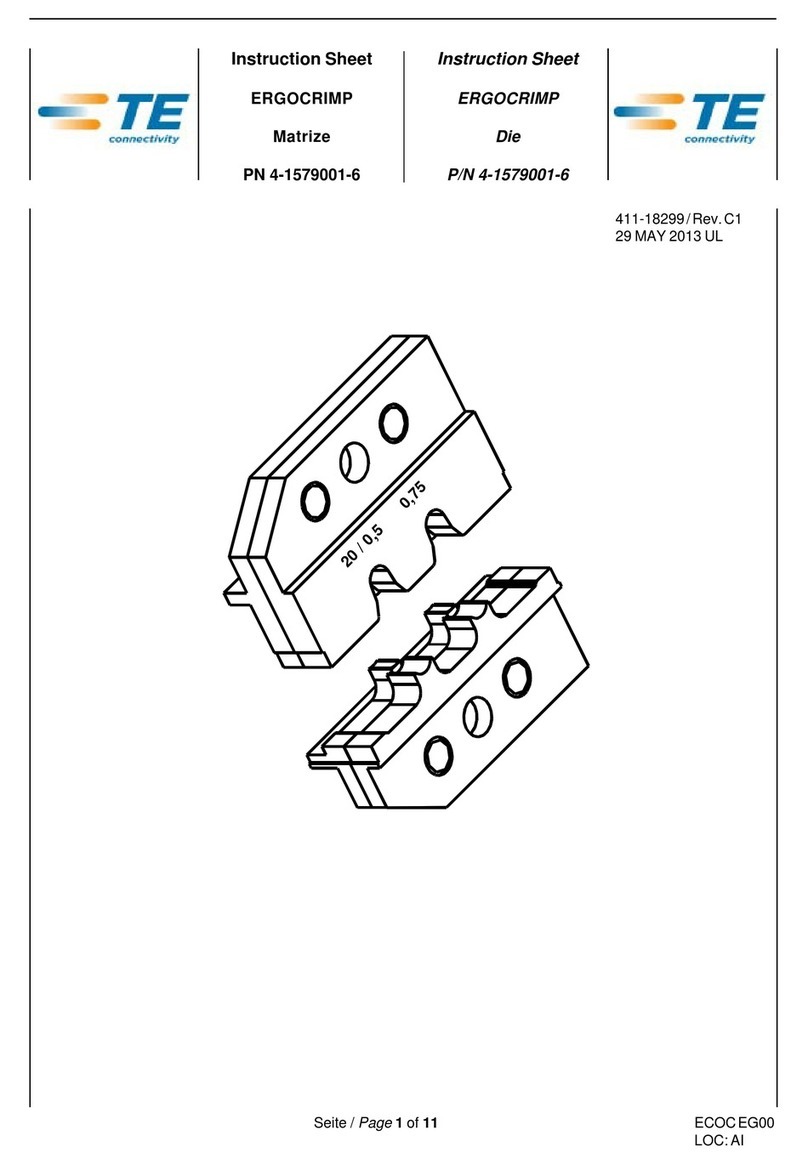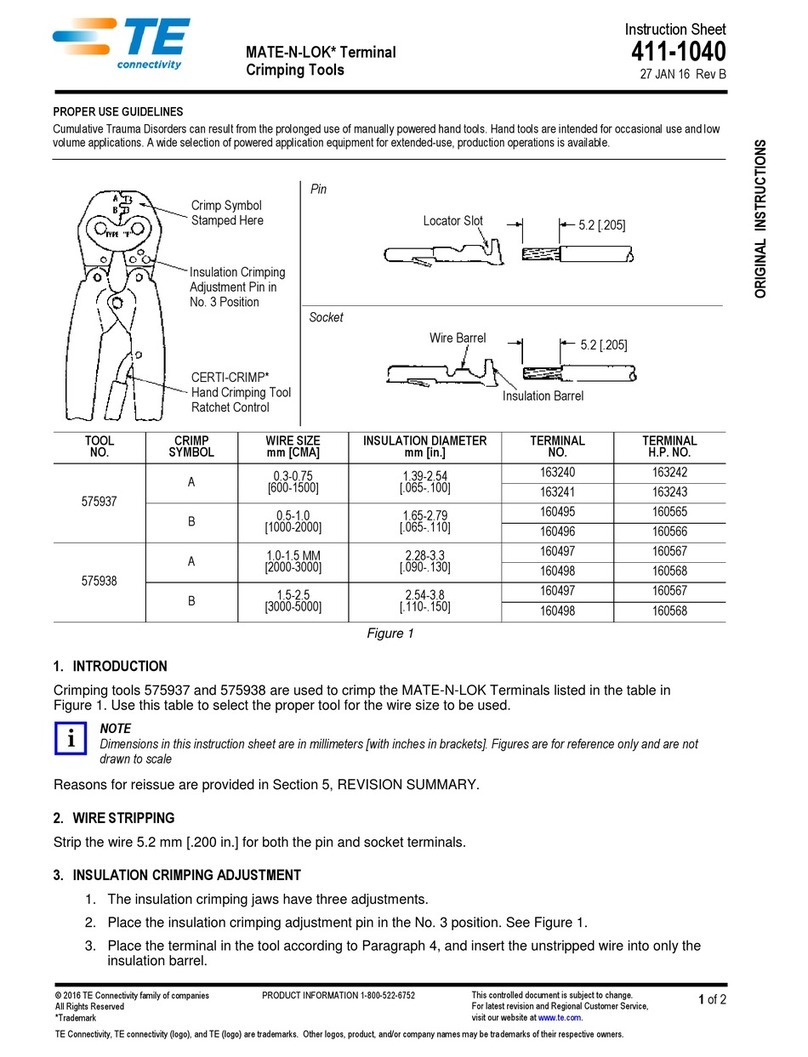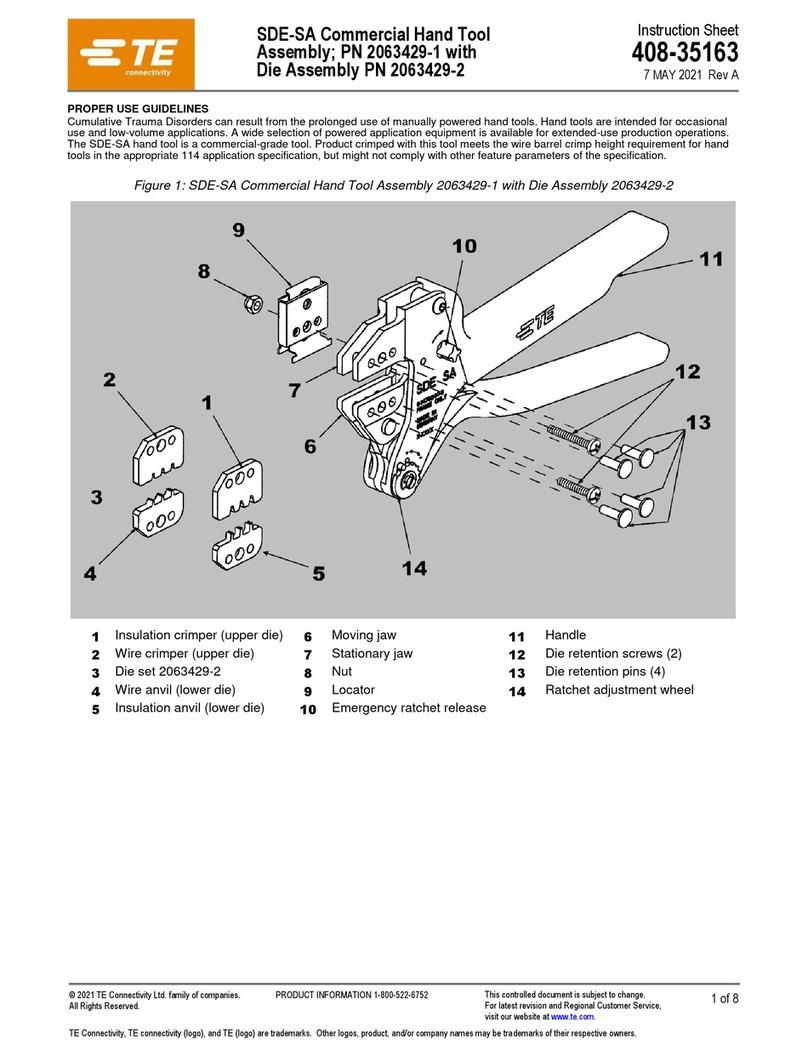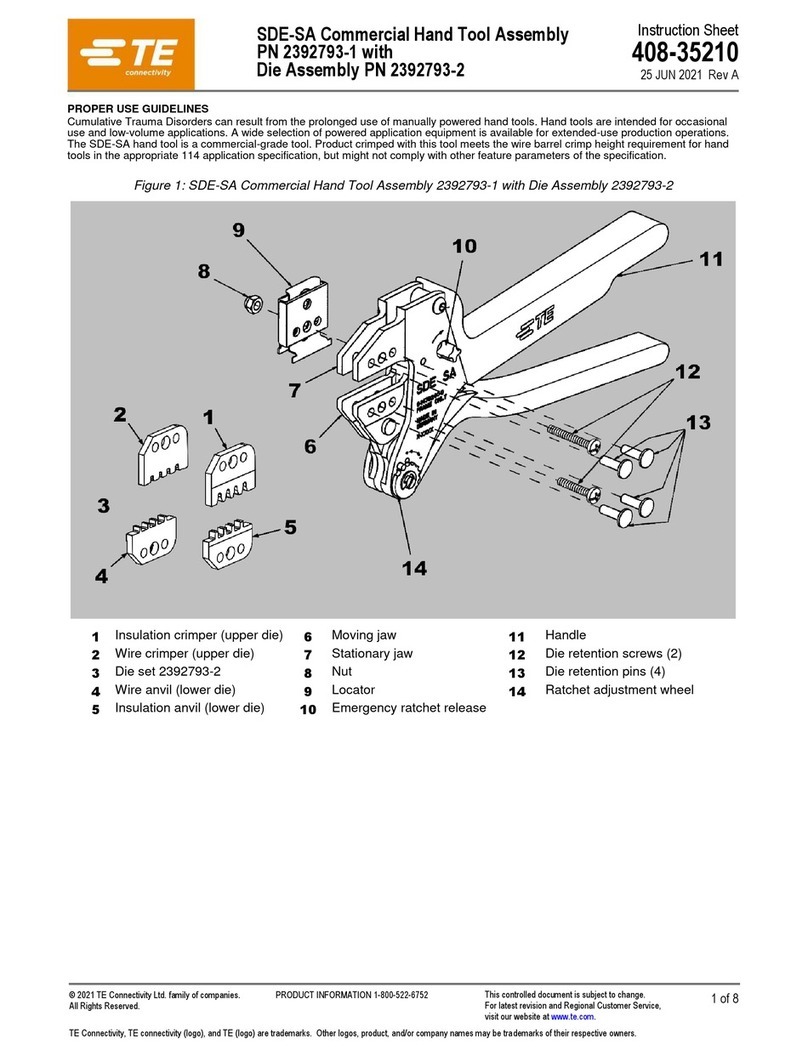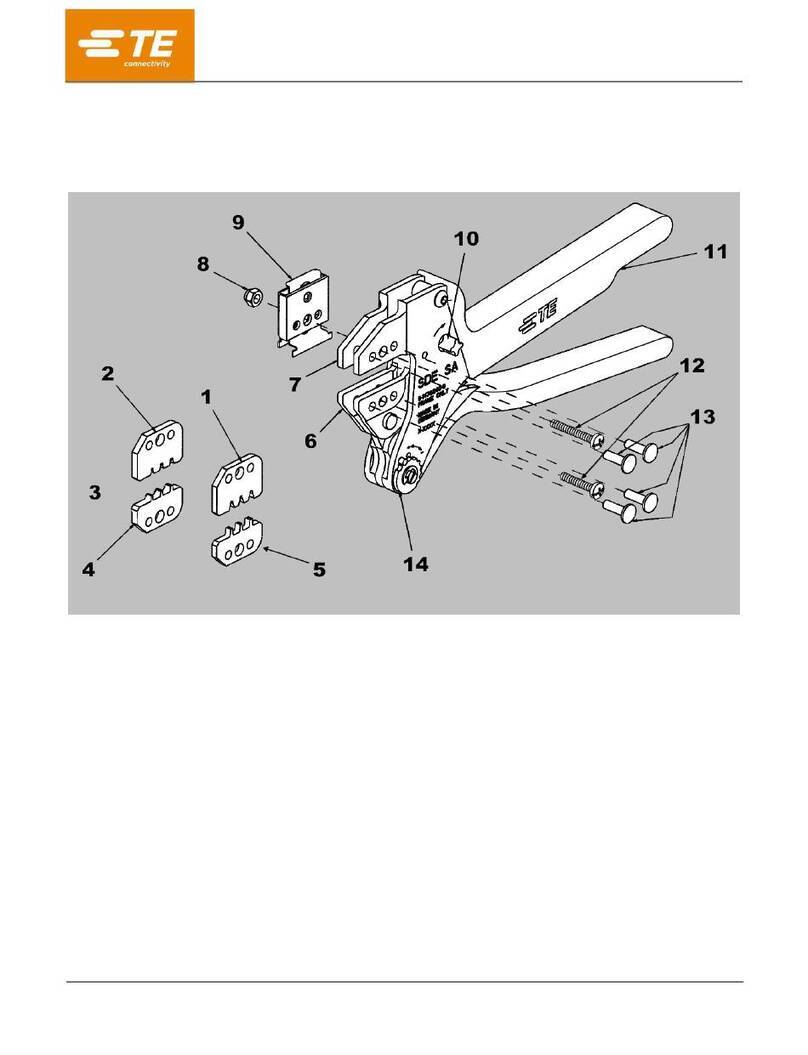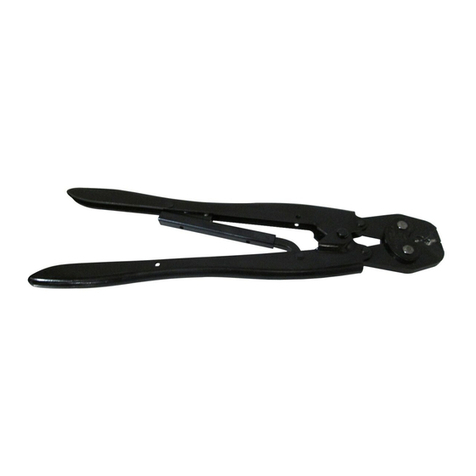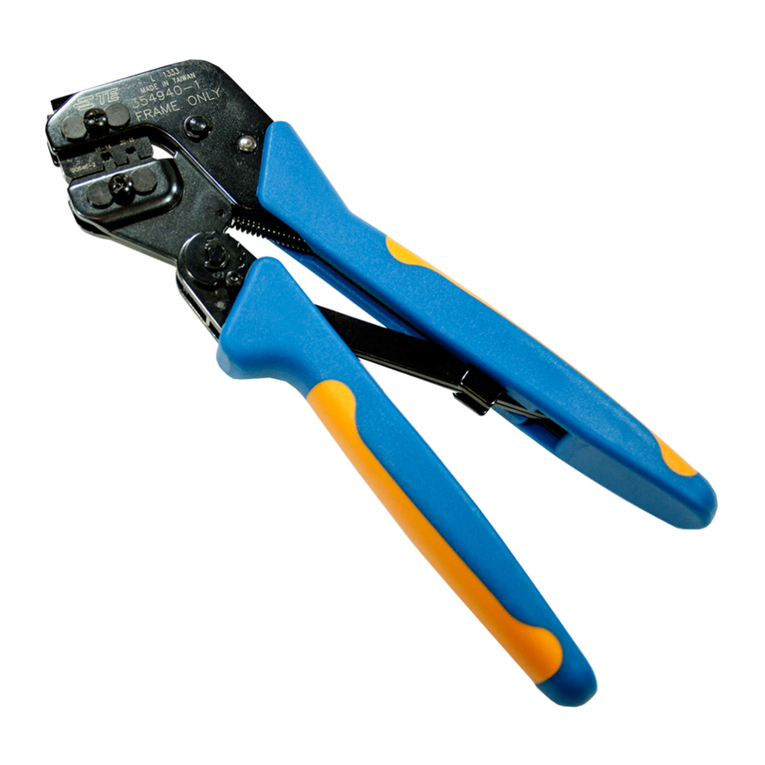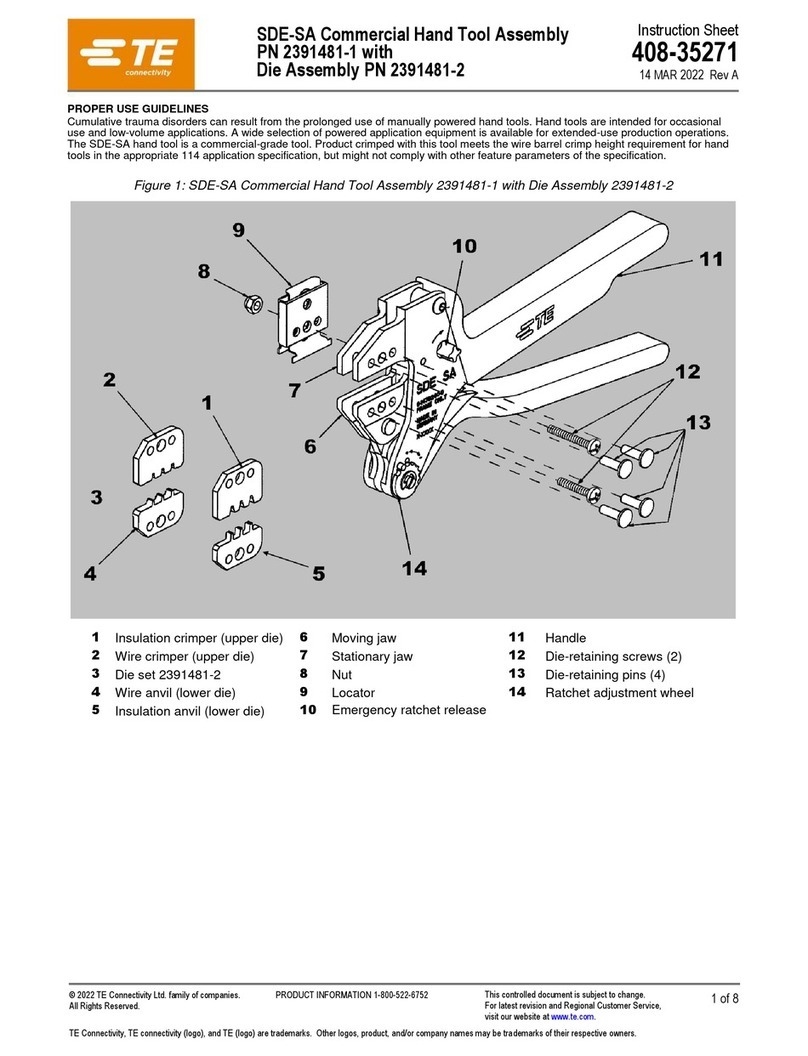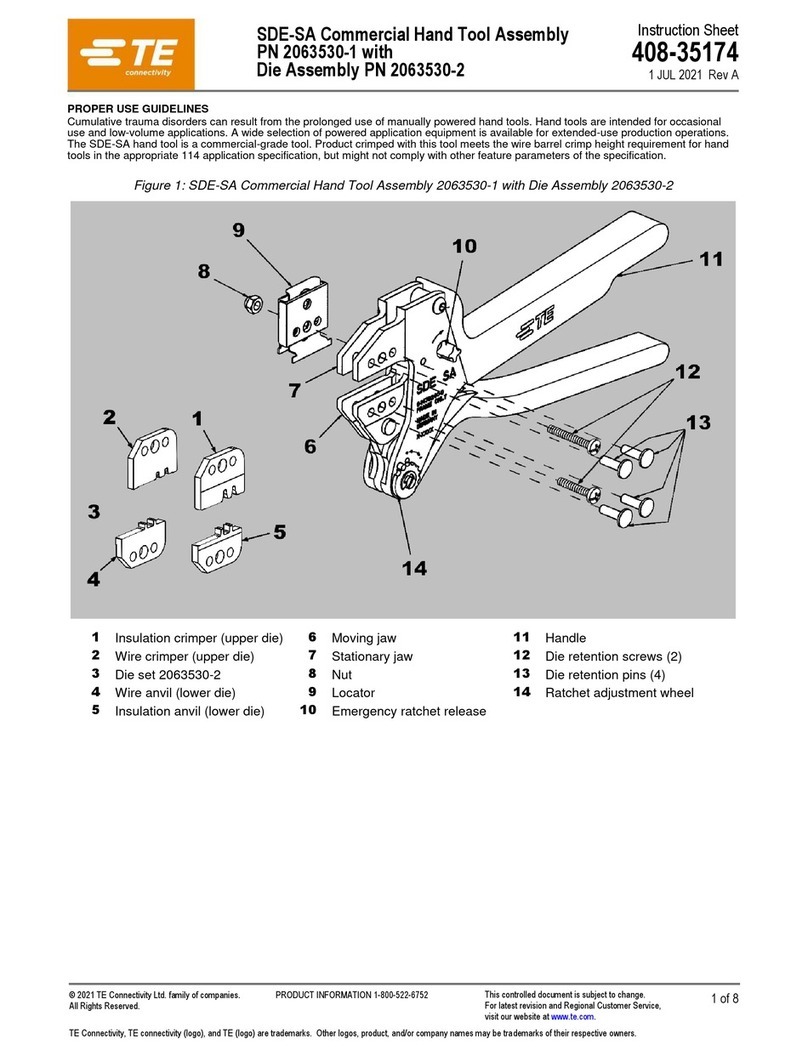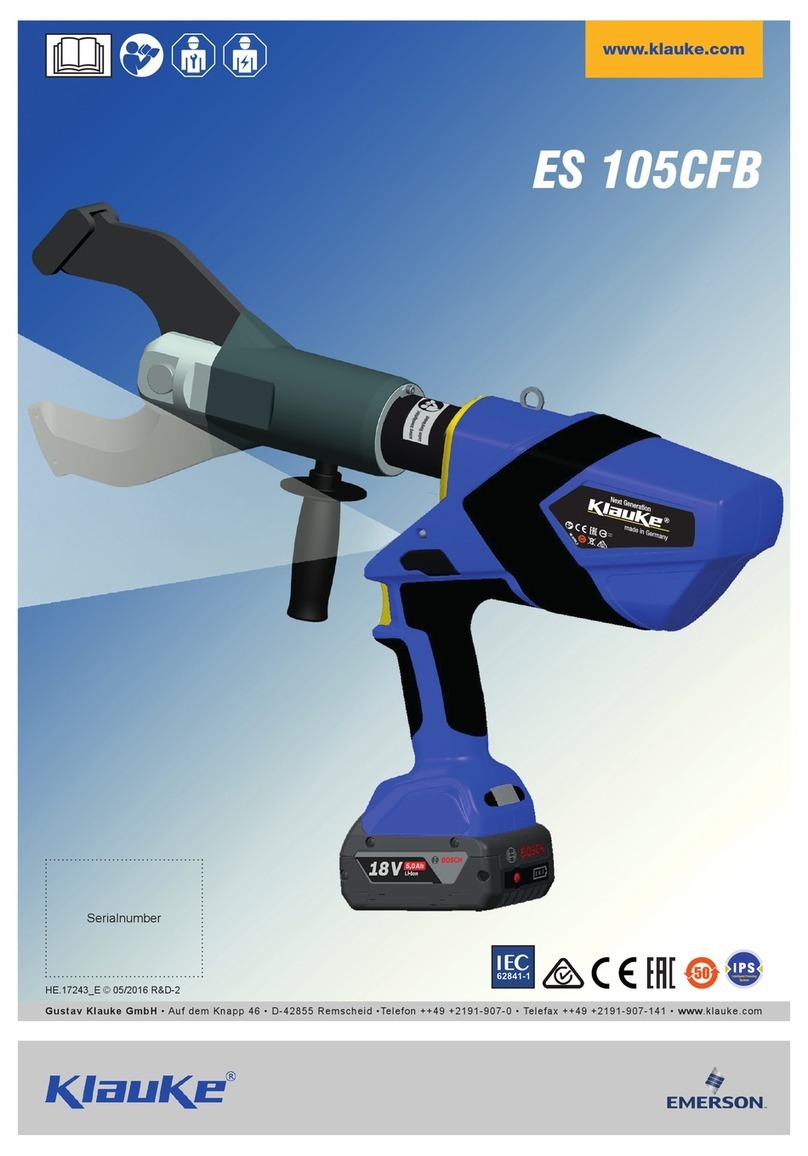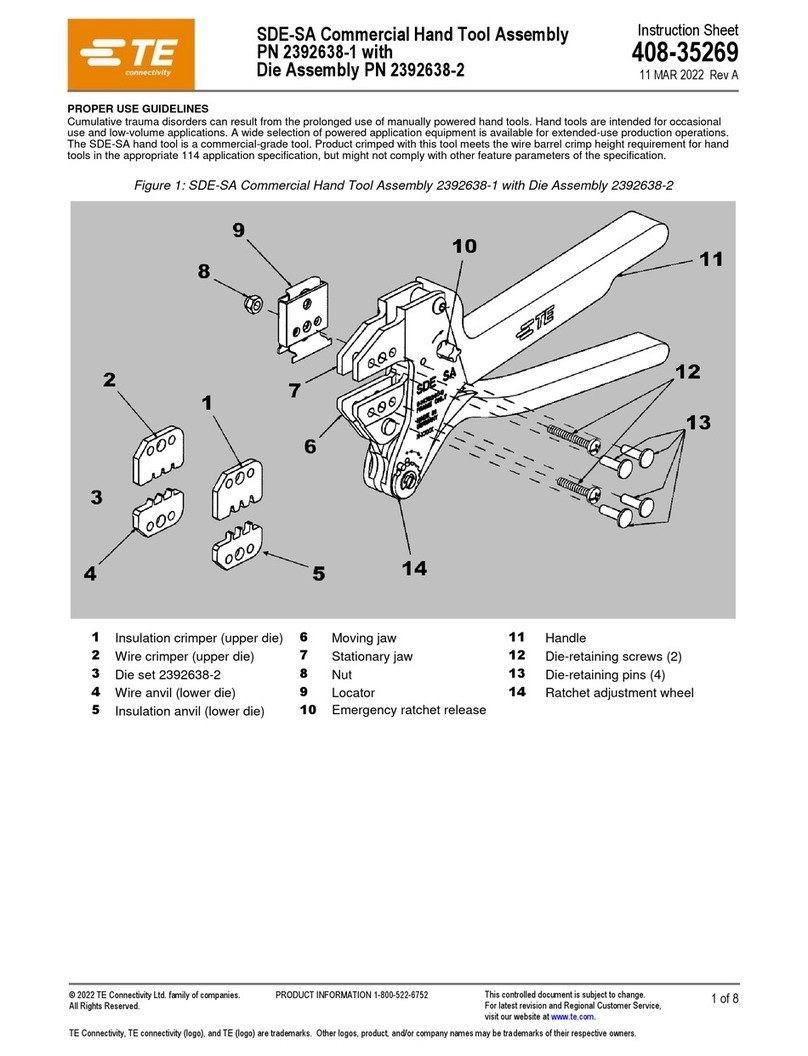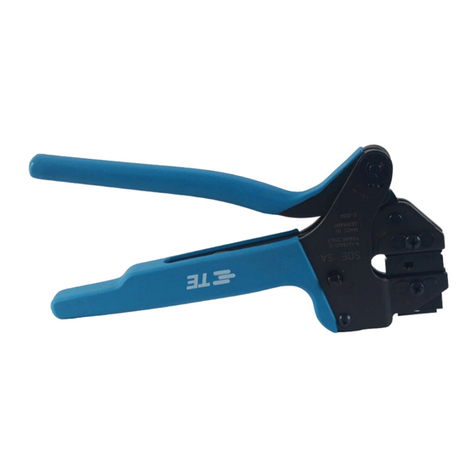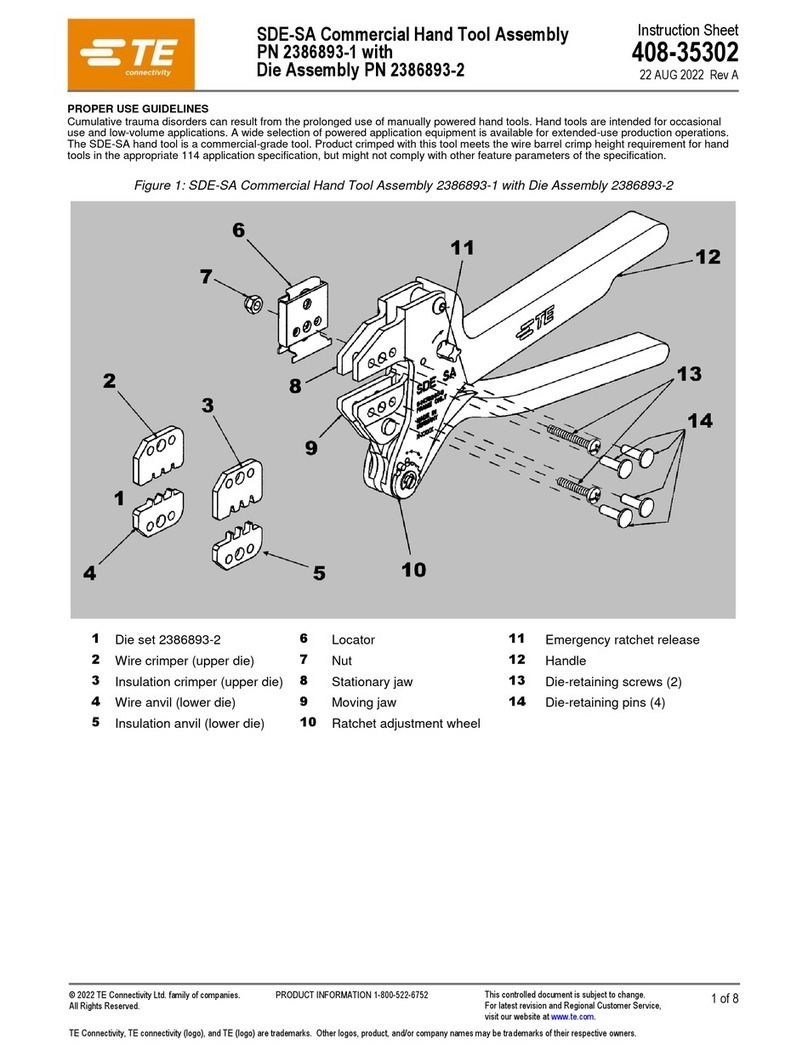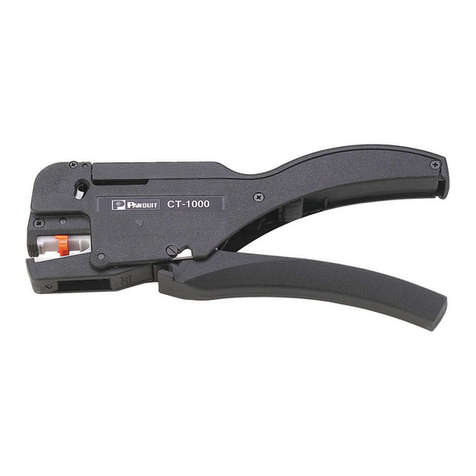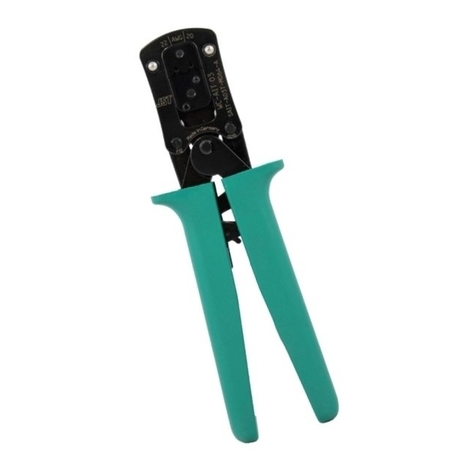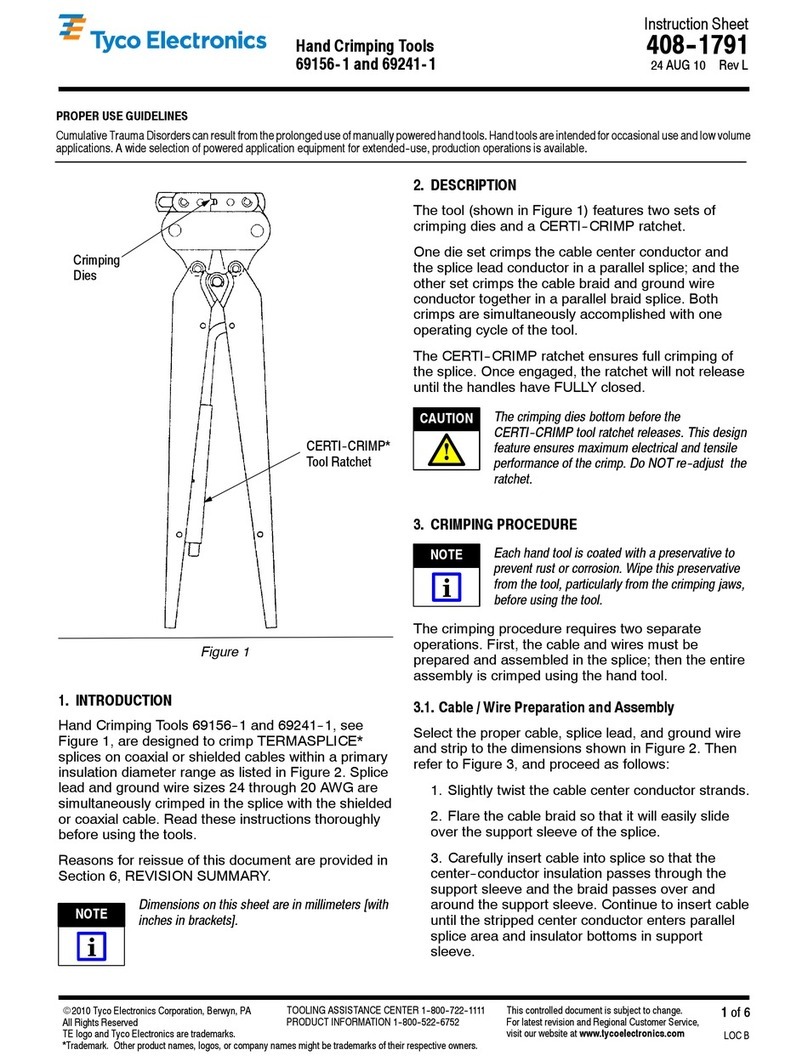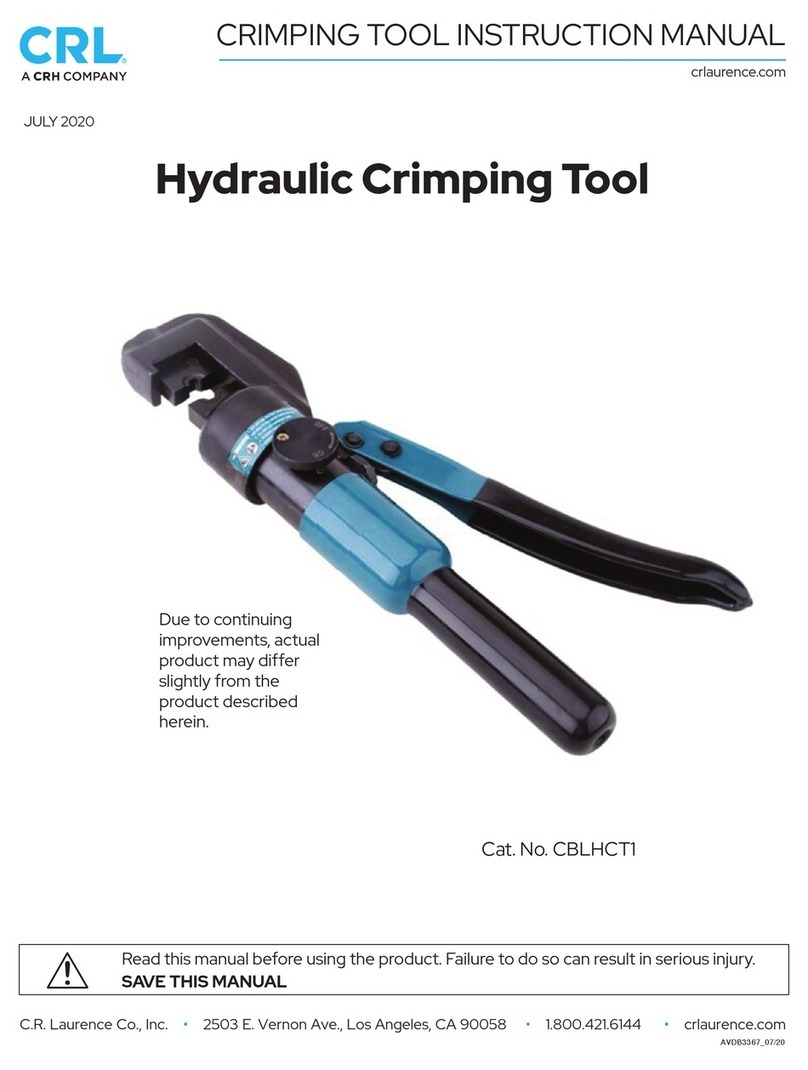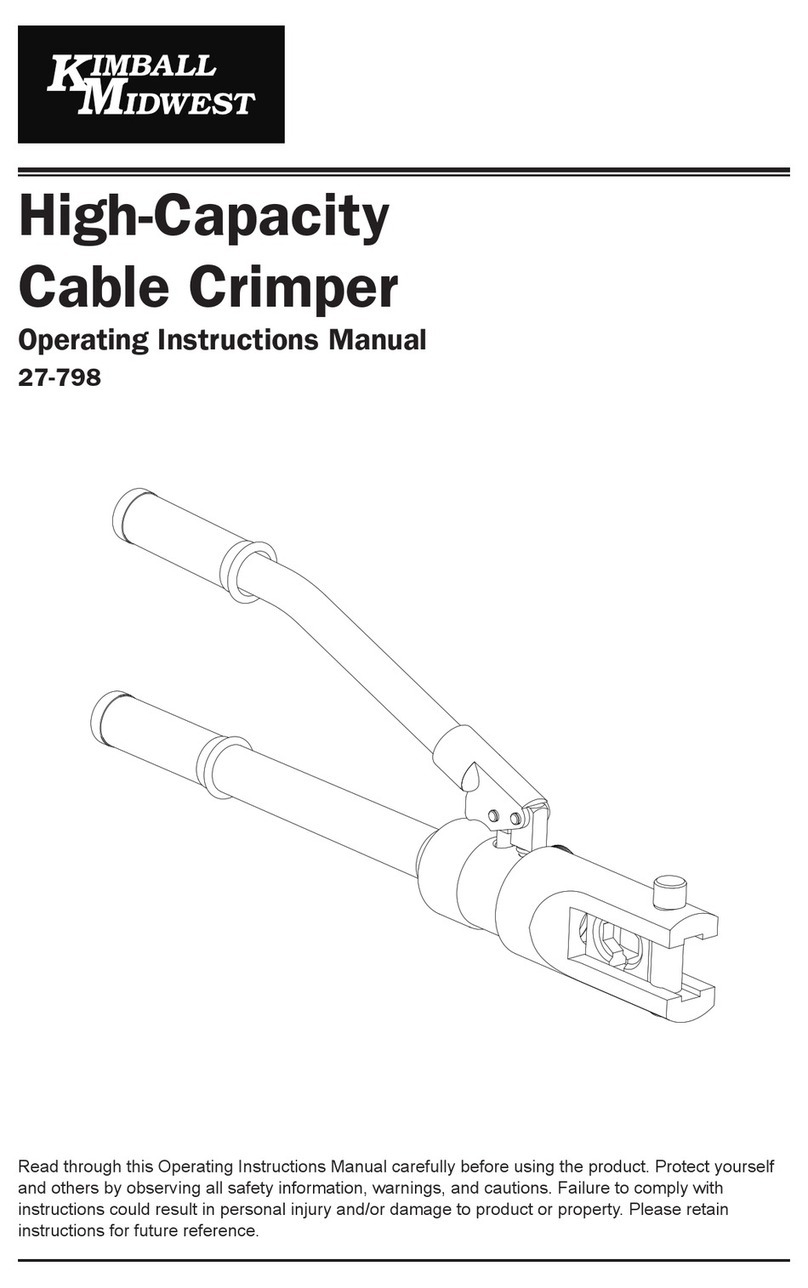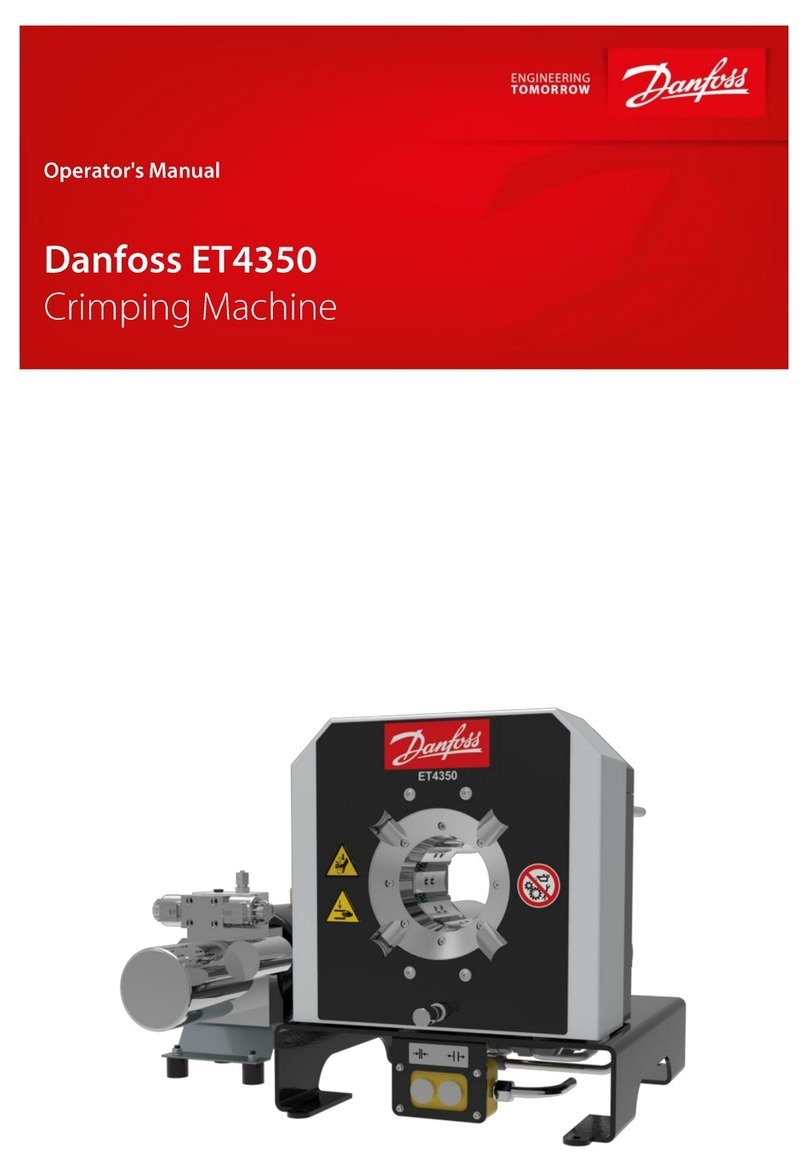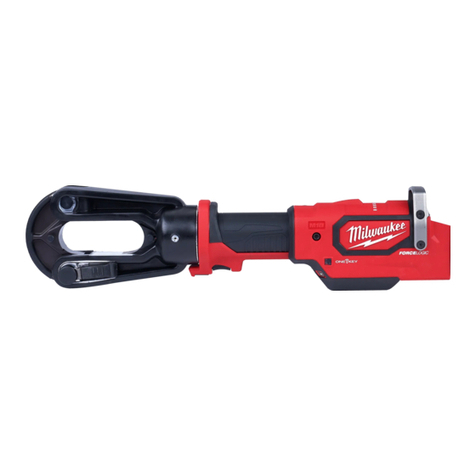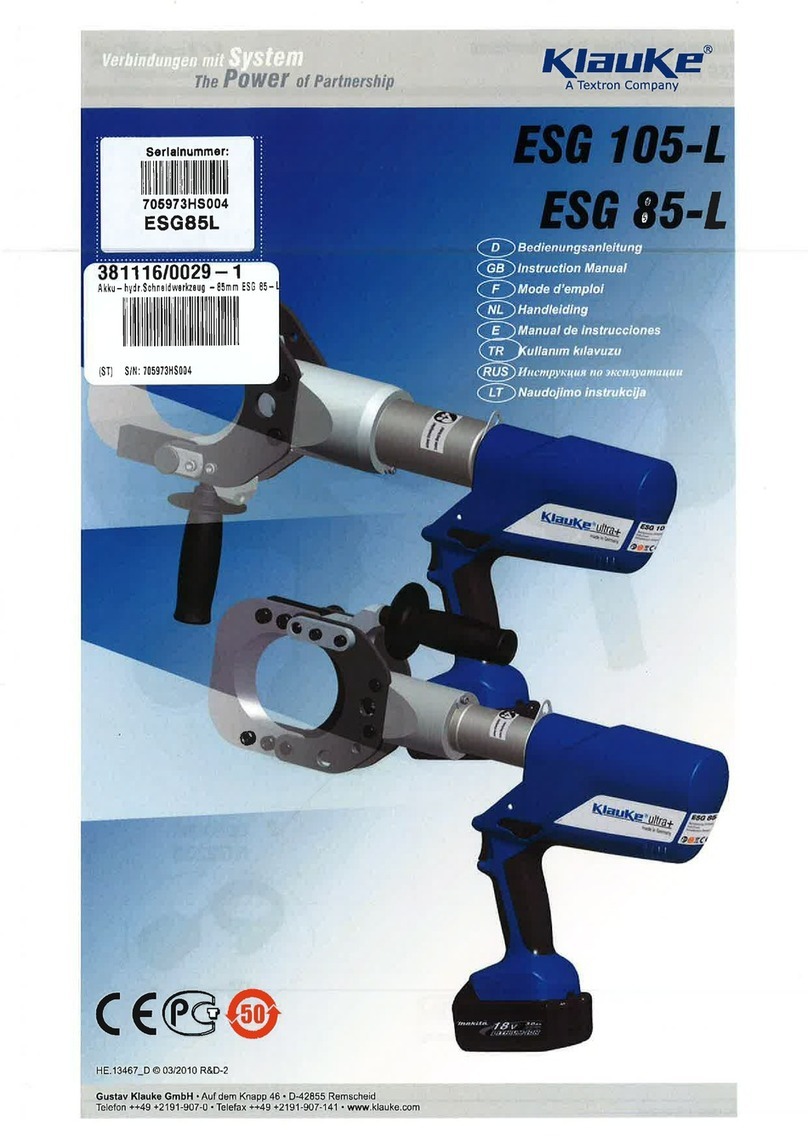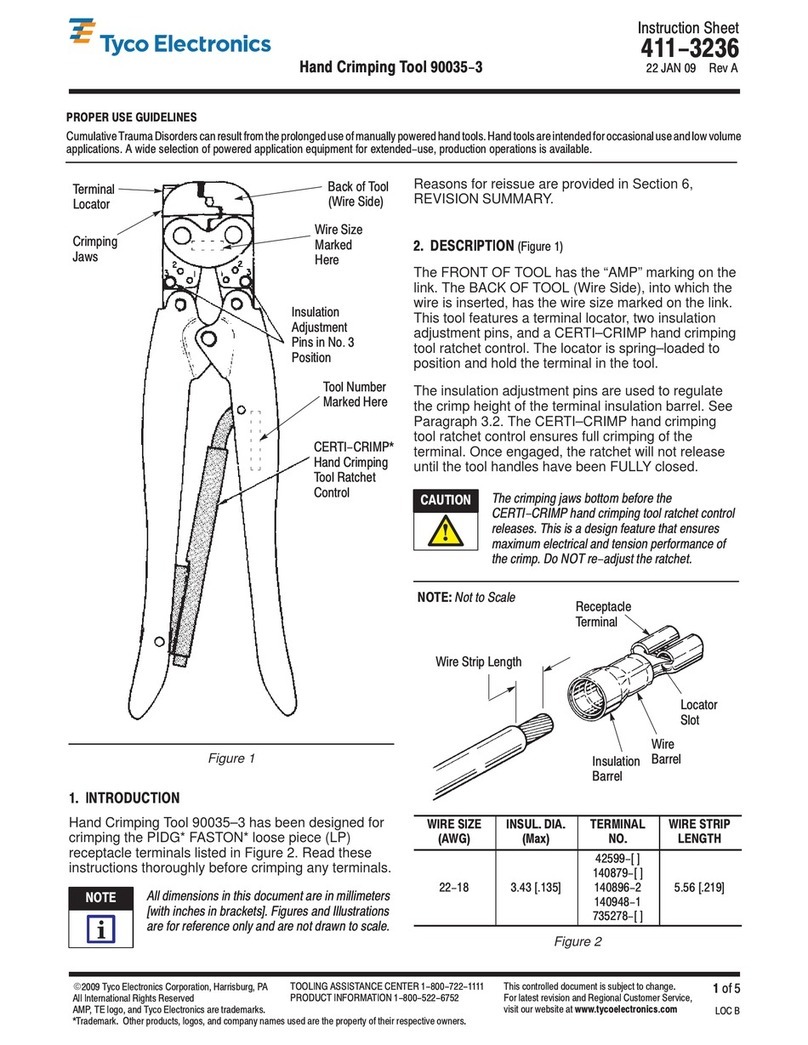
408-6610
3of 4
Rev E
Specialprecautionsmustbetakenwheninsertinga
wireintoacontactcrimpedinthecrimpingchamber
marked “24-20/30-26”. The full length of the
stripped wire must rest on the bottom of the wire
barrel. For information concerning this “crush
crimp” technique, refer to Instruction Sheet
408-7497.
6. Holding the wire in place, squeeze the tool
handles until ratchet releases, then remove the
crimped contact.
Damagedcontacts mustnot beused.If adamaged
product is evident, it should be cut from the wire
andreplacedwithanewone.DONOTre-terminate
contacts.
4. MAINTENANCE AND INSPECTION
It is recommended that a maintenance and inspection
program be performed periodically to ensure
dependable and uniform terminations. Though
recommendations call for at least one inspection a
month, frequency of inspection depends on:
— care, amount of use, and handling of the hand
tool
— presence of abnormal amounts of dust and dirt
— degree of operator skill
— your own established standards
The tool is inspected beforebeing shipped; however, it
is recommended that the tool be inspected
immediately upon arrival at your facility to ensure that
the tool has not been damaged during shipment.
4.1. Daily Maintenance
1. The hand tool should be immersed (handles
partially closed) in a reliable commercial degreasing
compound to remove accumulated dirt, grease, and
foreign matter. When degreasing compound is not
available, the tool may be wiped clean with a soft,
lint-free cloth. DO NOT use hard or abrasive objects
that could damage the tool.
2. Make certain that the retaining pins are in place
and that they are secured with retaining rings.
DO NOT remove the retaining pins as permanent
damage to the tool could result.
3. All pins, pivot points, and bearing surfaces should
be protected with a THIN coat of any good SAE 20
motor oil. DO NOT oil excessively.
When the tool is not in use, keep handles closed to
prevent objects from becoming lodged in the dies.
Store the tool in a clean, dry area.
SAE is a trademark.
4.2. Periodic Inspection
At least one inspection a month is recommended and
the inspection frequency should be based on the
amount of use, ambient working conditions, operator
training and skill, and company established standards.
A. Lubrication
Keep all pins, pivot points, and bearing surfaces
lubricated with SAE 20 motor oil as follows:
•Tool used in daily production-lubricate daily
•Tool used daily (occasionally)-lubricate weekly
•Tool used weekly-lubricate monthly
Wipe excess oil from the tool, particularly from the
crimping area. Oil transferred from the crimping area
onto certain terminations may affect the electrical
characteristics of an application.
B. Visual Inspection
1. Close the tool handles until the ratchet releases
and then allow them to open freely. If they do not
open quickly and fully, return the tool for evaluation
and repair. See Section 5, REPLACEMENT AND
REPAIR.
2. Inspect the head assembly for worn, cracked, or
broken areas. If damage is evident, return the tool
for evaluation and repair. See Section 5,
REPLACEMENT AND REPAIR.
C. Crimp Height Inspection
This inspection incorporates the use of a crimp height
comparator (micrometer with a modified anvil) as
shown in Figure 4. Detailed information on obtaining
and using a crimp height comparator can be found in
Instruction Sheet 408-7424.
Proceed as follows:
1. Determine the maximum wire size, and select the
applicable contact for the tool (see Figure 1).
2. Refer to Section 3, CRIMPING PROCEDURE,
and crimp the contact accordingly.
3. Using the crimp height comparator, measure the
wire barrel crimp height as shown in Figure 4.
If the crimp height conforms to the dimensions shown
in Figure 4, the tool is considered dimensionally
correct. If not, return the tool for evaluation and repair
(see Section 5, REPLACEMENT AND REPAIR).
